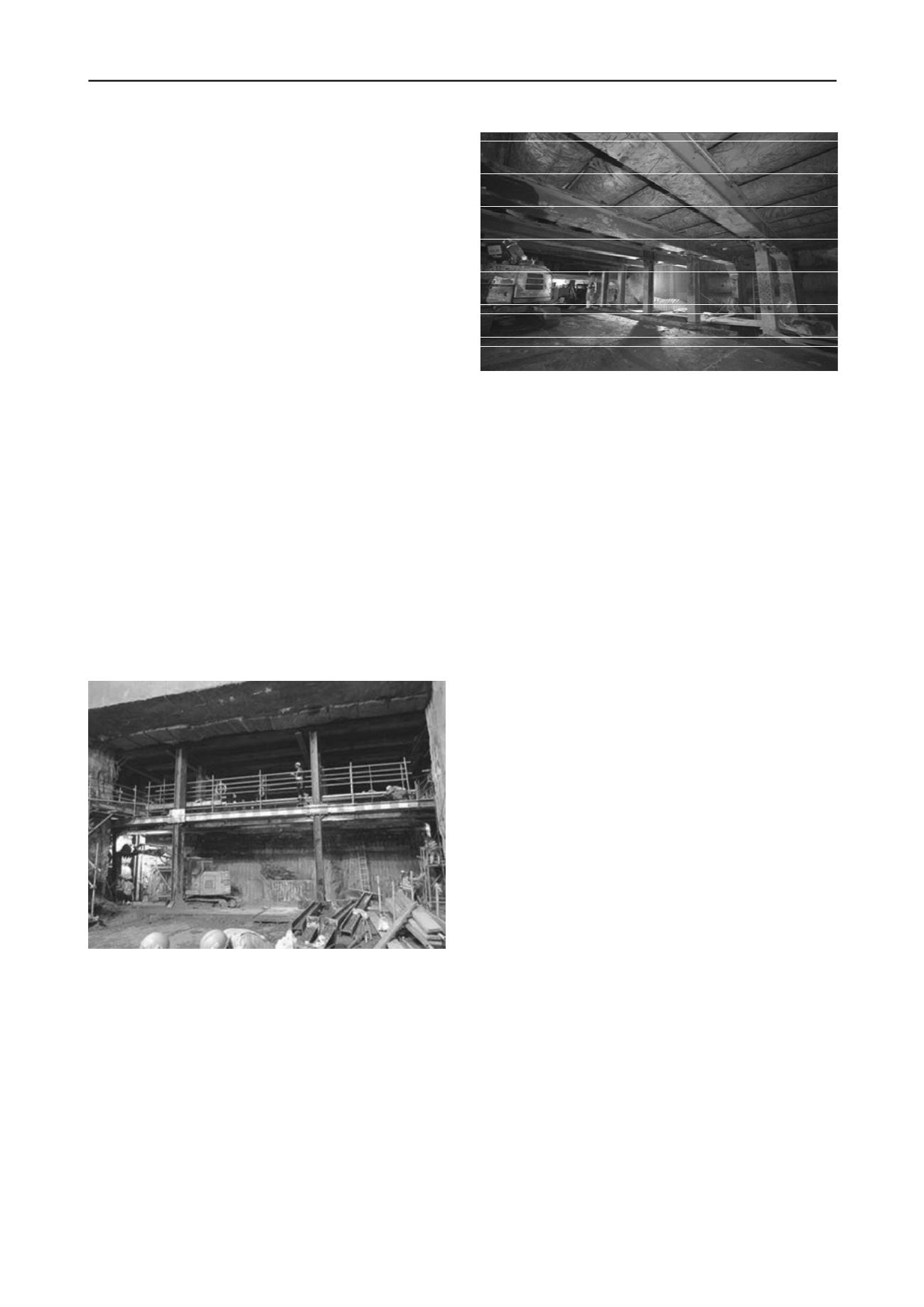
188
Proceedings of the 18
th
International Conference on Soil Mechanics and Geotechnical Engineering, Paris 2013
Proceedings of the 18
th
International Conference on Soil Mechanics and Geotechnical Engineering, Paris 2013
The Client had been concerned about the strength of the
Marine Clay below the existing station and it had been
impossible to carry out a soil investigation campaign at this
location. ‘Soil improvement’ in advance of the mining works
had therefore been specified but left to the Contractor to
determine although ground freezing or horizontal jet grouting
had been mooted. Soletanche Bachy shared the Client’s
concerned about the use of ground freezing or horizontal jet
grouting around such sensitive structures and so proposed a
combination of two soil improvement methods; using Springsol
and fibreglass soil nails.
Initially developed to strengthen the ground below existing
railway tracks, the Springsol method uses a foldable tool,
developed by the Soletanche Bachy, and is able to install
400mm or 600mm diameter soil mixed columns through a small
opening of only 162mm diameter.
The innovative horizontal application of this method proved
highly efficient at improving the Marine Clays before the
diaphragm wall was opened fully and also allowed the efficient
installation of the fibreglass soil nails.
Figure 18. North Wing top heading -Roof pipes and heavy frames.
6 CONCLUSION
On completion of the soil improvement, the diaphragm wall
could be cut and the excavation started using the soffit of the
existing station base slab as the roof of the tunnel. Heavy steel
frames (up to 551kg/m) were then installed as the excavation
advanced. These frames were pre-fabricated at a workshop and
assembled off site to ensure everything fitted when installed in
the restricted mining area. In some areas, with a working
headroom of only 2m, the use of heavy machines was
impossible and here most of the frames were installed manually
using chain blocks. The steel work installation in such confined
spaces brought specific safety issues and the whole workforce
were subject to targeted safety training and more regular safety
talks to achieve our goal of zero accidents.
The successful completion of the mining sections of the contract
were undoubtedly the key to overall performance of the works.
They required the mobilisation of significant resources and
considerable preparation. In total 7,400m of 600mm and
900mm diameter steel pipes were driven in the three locations
with 2,200t of steel frames positioned to support the excavation
using a total of 130,000 bolts. With soil improvement
comprising 29,000m3 of Jet Grouting, 930 Springsol columns
which incorporated 4,400m fibreglass soil nails.
Figure 17. Central mining invert– Excavation and frames installation.
Once the bulk excavation work was complete, micropiles
were installed to support the base slab for the new line. A
permanent lining with waterproofing was installed and the
temporary frames removed leaving the tunnel available for the
system wide contractors to complete the last part of the job for
the opening of the line in late 2013.


